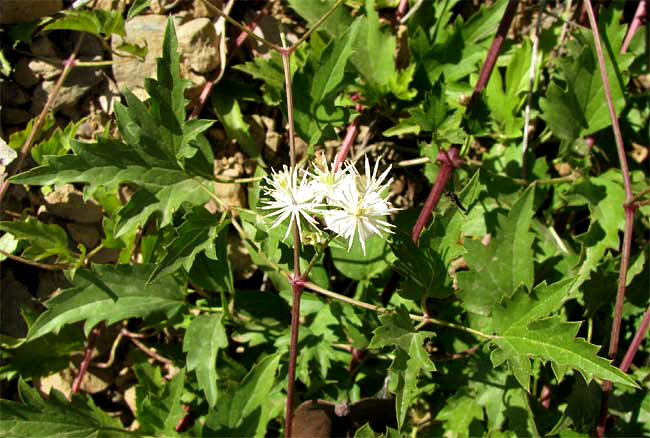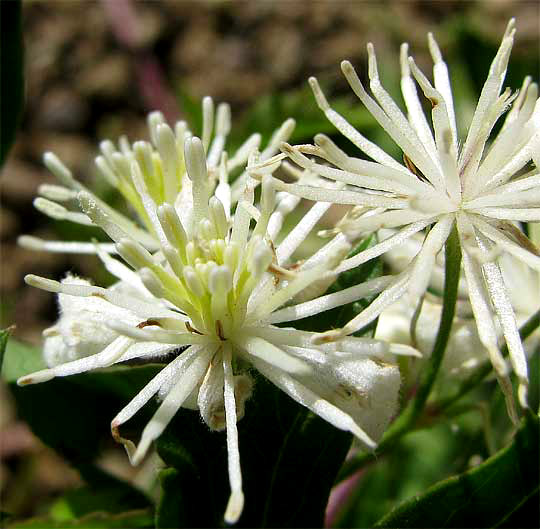Excerpts from Jim Conrad's
Naturalist Newsletter

from the the August 30, 2009 Newsletter, issued from the Siskiyou Mountains west of Grants Pass, Oregon:
A SURPRISING CLEMATIS
In environments as severe as roadcut stone walls at 3500 feet you're not surprised to find unusual plants with special adaptations enabling them to thrive there. What's surprising is when in such an extreme environment you find a species you think of as typical of moist, rich soils down in the valley. That was the case this week when a species new to me, but clearly a clematis, turned up clambering over a roadcut's wind- and sun-blasted stone face near Onion Mountain. You can see the vine's leaves and flowers above.

Above a close-up shows clusters of many white, pollen-producing stamens subtended by white, petal-like sepals, there being no petal-bearing corollas among clematises, and this being a species producing unisexual flowers.
Best I can figure out, this is the common Western White Clematis, CLEMATIS LIGUSTICIFOLIA. Clematises are often referred to as Virgin Bowers.
The Flora of North America describes this species' habitat as "Forest edges, woods, riparian deciduous woodlands, moist wooded draws, scrub, secondary sites derived from these, or clearings and pastures, usually near streams or on moist slopes." That's far from the exposed, rocky roadcut face where I found it. Maybe a seed blew where water seeped from the cliff, though I could see no evidence of that.
I'd like to think that I've discovered something new, but Western White Clematis, found throughout most of western North America, is variable, and experience tells me that it's hard to find something new in this part of the world. The compound leaves are more leathery, shiny and deeply incised and toothed than normal, but drought and intense sunlight sometimes do that to a species. Maybe someone out there can help me understand what's going on here better.
Infusions made from Clematis ligusticifolia were used by Native Americans as a wash for skin eruptions, a lotion for backaches and swollen limbs, and as a lotion for protection against witches. Stems and leaves were chewed to treat colds and sore throats, and decoctions of leaves were used for stomachaches and cramps. Lathers of leaves were used to treat boils on humans and other animals